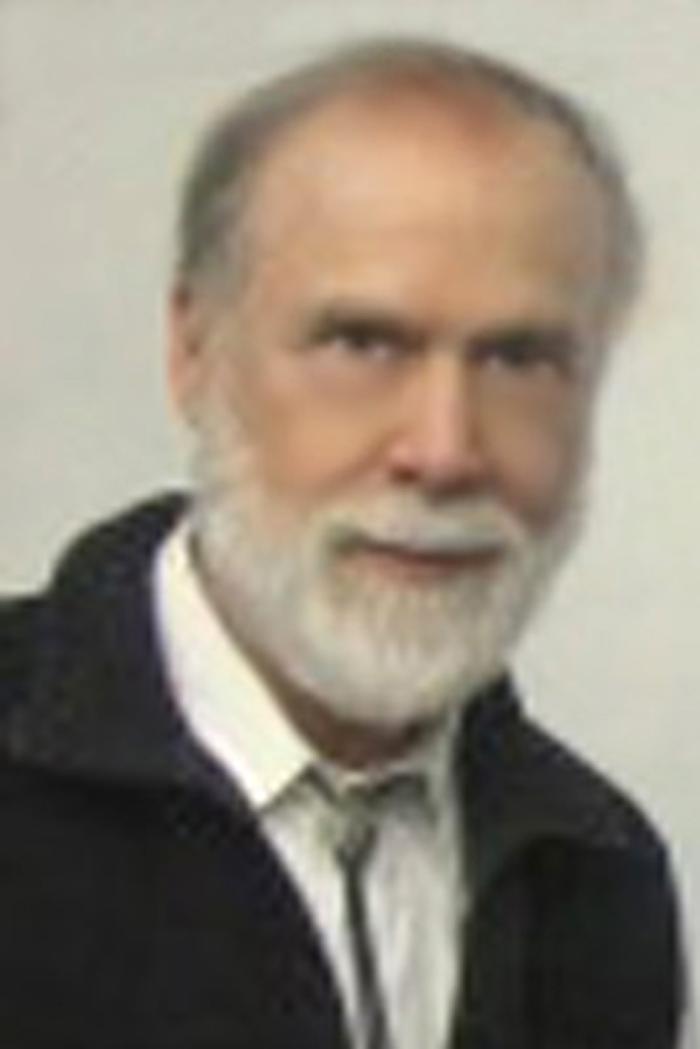William Carleton Parke

William Carleton Parke
Professor Emeritus of Physics
Emeriti
Professor Emeritus of Physics William Carleton Parke retired at the end of May, 2012, after a long career at GW. He became known for his versatility in both teaching and research, having made contributions in the fields of nuclear physics, biophysics, astrophysics, and quantum computing. He loved to answer questions from his students, and rarely referred to notes during lectures. In 2011, the members of the GWU Physics Society gave him the title, "The Renaissance Man".
Prof. Parke began at GW as an undergraduate student in the Fall of 1959 under a full presidential scholarship. His subject was physics, having been enthralled at an early age by how nature operates. His dedication led to academic achievements, and to his being elected to Phi Beta Kappa in his senior year. His graduate studies were directed by GW Prof. Herbert Jehle, who was known for work in theoretical particle physics and in biophysics. Naturally, Prof. Parke adopted these same fields in his early research and publications. During his graduate years, he was supported by fellowships from the National Science Foundation and the National Aeronautics and Space Administration. He was also able to spend summers doing research at Stanford and the University of Colorado. While a graduate student, he started teaching for GW in 1966 as a Lecturer. After receiving a PhD in 1967, he became a National Academy of Sciences-National Research Council postdoc at the National Bureau of Standards, Radiation Division, working with Drs. Ray Hayward and Sid Meshkov. He returned to GW in 1969 as an Assistant Professor.
In the early years on the faculty, Prof. Parke worked with his close colleague Prof. Donald R. Lehman, who he knew since they were graduate students together. Their initial project was the first calculation of the beta decay lifetime of helium-six from basic principles, using the three-body model which Prof. Lehman had so successfully developed during his PhD work with Prof. Prats, and Prof. Parke's experience with weak interactions while working with Ray Hayward. Agreement with experiment was spot on. (Some years later, Prof. Eskandarian found a sign error in one of the contributing terms, but fortunately, this was a very small term.) Collaboration continued, with a number of gratifying results, including the first demonstration that shell model properties of the nucleus (in this case, lithium-six) can be derived from basic nuclear forces. These were the days when algebraic reduction had to be done by hand rather than by computer. In each of the aforementioned calculations, several thousand algebraic terms arose. Another very satisfying result was the derivation of a general method for Cartesian coupling of tensors, with a closed form for the equivalent of the Racah coefficients.
In 2002, Graduate student Alaa Ibrahim and his thesis director Prof. Parke, together with collaborator Jean Swank and others at NASA-Goddard Space Flight Center, got into the news for their discovery of a magnetar, a strongly magnetized neutron star. Prof. Parke later helped found the GW Astrophysics Group, inspired and directed by Prof. Kalvir Dhuga and including Prof. Eskandarian and Prof. Leonard Maximon. He also became a founding member of the GW Center for Quantum Computing, Information, Logic, and Topology.
In the early 1970's, Prof. Parke proposed to the Chair (then Julian Eisenstein) that the Department offer an intermediate course covering physics in medicine and biology at a level above the initial year course in physics. There was a good audience in the pre-medical students, and in the pre-bioengineers. After the Department heard the details for the proposed course, they agreed. Prof. Parke taught the course for the next thirty seven years. During this same period, he taught the introductory physics course, and later, the astronomy course (after the retirement of Prof. Hobbs, creator and presenter extraordinaire), as well as all other offerings of the Department, including the graduate courses, except for Solid State Physics, and even some new ones, such as Science and Values (co-taught with Prof. William Schmidt in Chemistry and Prof. Henry Merchant in Biology), Astrobiology (co-taught with Prof. Earl Skelton) and Einstein's General Relativity.
Prof. Parke was elected by the Columbian College of Arts and Sciences to serve in the Faculty Senate and the Senate Executive Committee in 1991. In 1999, he was elected Chair of the Physics Department, and, until retirement, served in that capacity, off and on, for a total of about ten years.
He was awarded the Oscar and Shohana Trachtenberg Price for Service in 2002, in part for the design and implementation of the George Gamow plaque. (President Trachtenberg later agreed to implement Prof. Parke's proposed design of the Edward Teller and the Niels Bohr plaques.) In 2004, he received the CCAS Robert Kenny Prize for Teaching Excellence. In 2005, he was engaged to create the Einstein Miraculous Year Exhibit in the Lobby of the MPA building.
He has been principal investigator or co-principal investigator on about two dozen research grants in the fields of biophysics, nuclear physics, astrophysics, radiation physics, and quantum computing, and has published more than four dozen refereed papers and over fifty other papers and talks across all of these subjects, as well as co-authored a book on astronomy, was co-editor on a book on Gamow, and has drafted two other books, one on biophysics and another on general relativity.
His greatest pleasures in life came from his family, while his highest contribution he says has been helping to develop in young minds an appreciation of how exquisite nature can be, and that the quest for understanding is the most worthy of all endeavors.

